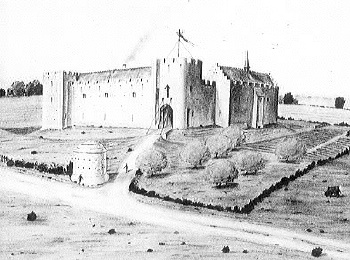Barry's History 2
Barry's early years, post
Romans, were troubled ones, with constant Viking raids making life difficult. Barry Island, for instance, was known to be a raiders' base
in 1087. Soon after this date the Normans arrived to divide the lands of the Vale of Glamorgan into manors and parishes. Barry became a
sub-manor to Penmark and by the 12th-13th centuries had grown into a village and port with its own church and water mill. It also had its
own Barry Castle, fragments of the which dating from 13th & 14th centuries can be seen on
the hill above Romilly Park.

The Black Death in the 14th century almost finished Barry, and it was not until the 17th Century that the population recovered sufficiently to be once again termed a village. The port became active once more, with local ships trading as far afield as France.
The 19th Century, of course, brought enormous changes to South Wales with the extensive mining of coal and iron in the valleys to the north of the Vale. Barry and the coast around it, however, remained rural until well into the second half of that century. The Romilly family bought the estate and were responsible for new building but Barry was still only a village in the 1860's and Barry Island was still referred to as a place that abounded with rabbits! Just over 100 years ago, the present Barry comprised only three small villages and a few scattered farms in three parishes - Barry, Merthyr Dyfan and Cadoxton. The population in 1881 was 85 in the village of Barry, and 403 in Cadoxton. Things, however, were to change dramatically, and Barry and Cadoxton were to develop in leaps and bounds.